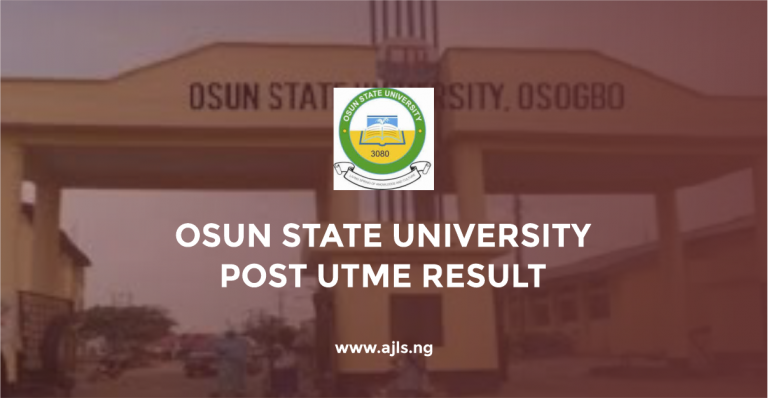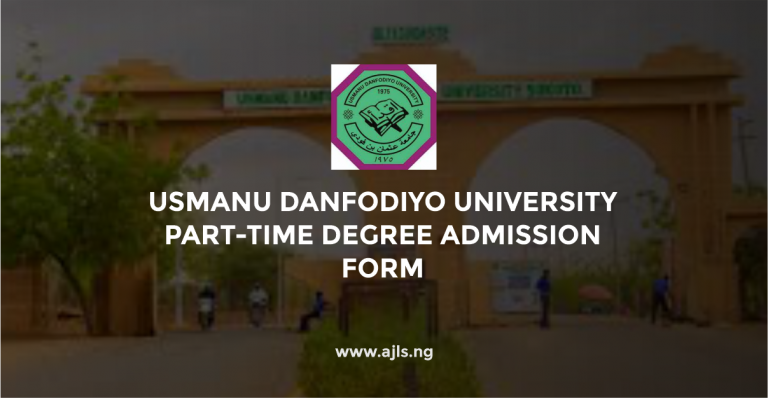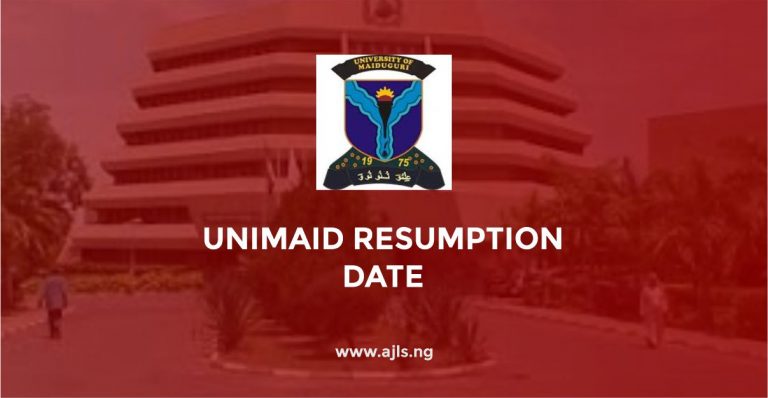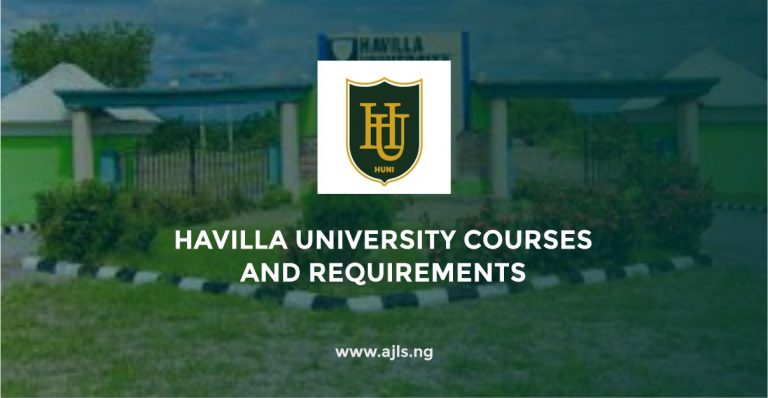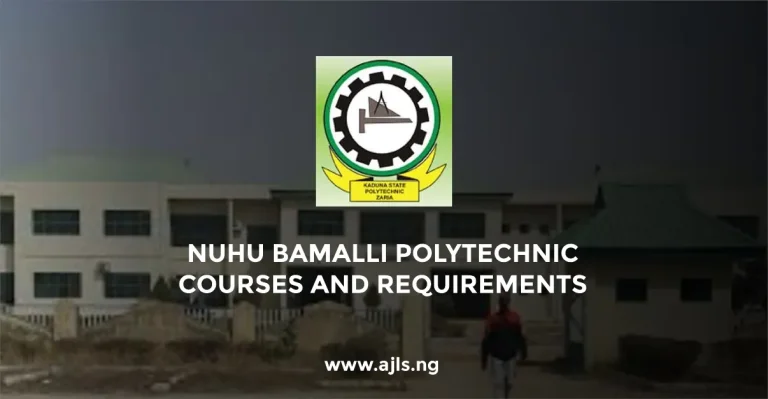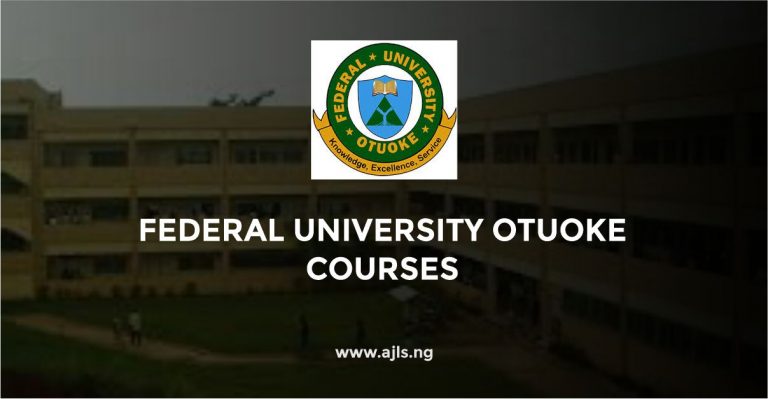JAMB Syllabus for Hausa 2025
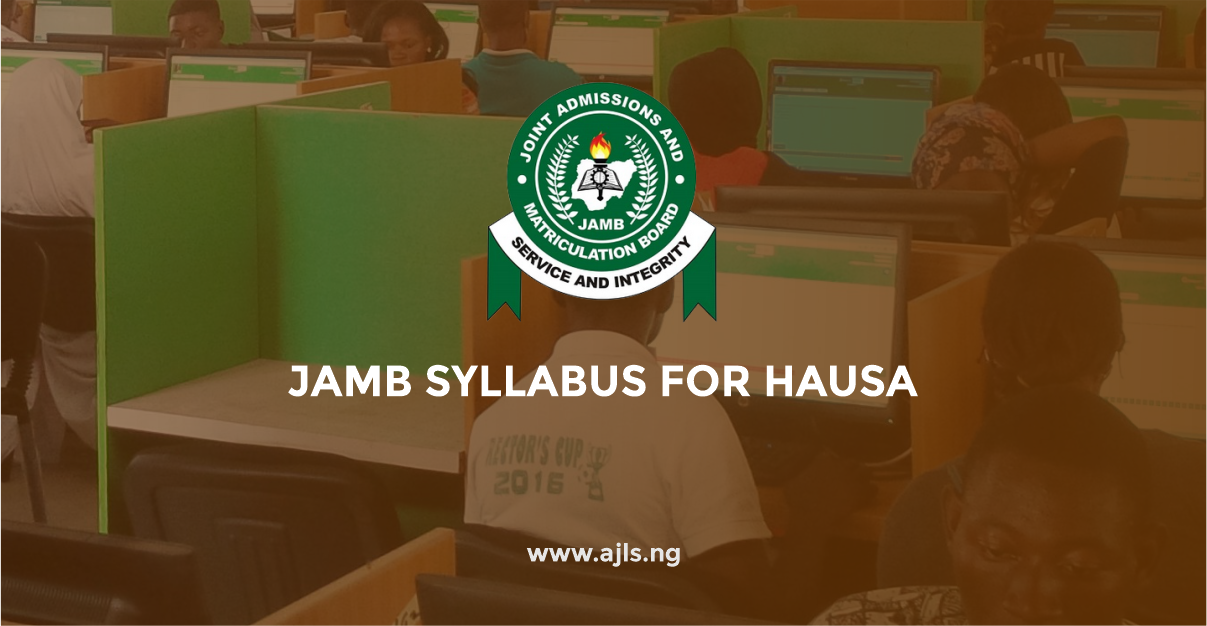
The Joint Admissions and Matriculation Board (JAMB) has designed the Hausa syllabus to assess candidates’ proficiency and understanding of various aspects of the Hausa language, literature, and culture. The syllabus aims to prepare candidates for the Unified Tertiary Matriculation Examination (UTME). This syllabus serves as an essential roadmap for students preparing to be assessed on their proficiency in the Hausa language, literature, and cultural studies.
JAMB Syllabus for Hausa
To excel in the UTME Hausa examination, candidates are advised to study the syllabus thoroughly, engage with recommended literary texts, and practice using past questions and exercises. The syllabus is structured into three main sections: Language (Harshe), Literature (Adabi), and Culture (Al’adu), each covering key thematic areas essential for a well-rounded understanding of Hausa studies.
By diligently following the syllabus, candidates can develop a strong command of the Hausa language, effectively analyze literary and cultural materials, and enhance their performance in the UTME. Below is the comprehensive outline of the JAMB Syllabus for Hausa, candidates aspiring to write Hausa as one of the subjects in the upcoming UTME should read this page attentively for guidance.
CIKAKKEN BAYANIN MANHAJA (DETAILED SYLLABUS)
SECTION A: Harshe (Language)
Topic 1: Ƙa’idojin Rubutu (Orthography)
Alphabetization; spelling; rules of word merger and division; punctuation, and paragraphing; are all in line with standard Hausa.
Objectives
Candidates should be able to:
i. Recognize the basic Hausa orthographical rules;
ii. apply the Hausa orthographical rules;
iii. detect linguistic errors, such as grammar, wrong choice of words, wrong spelling, etc.
Topic 2: Auna Fahimta (Comprehension)
Contextual questions from short unseen passages of about 300 words.
Objectives
Candidates should be able to:
i. read written Hausa texts;
ii. comprehend a given Hausa text;
iii. interpret various meanings and functions of words in a given text,
iv. acquire sufficient vocabulary;
v. recognize central issues in a given text;
vi. draw conclusions based on available evidence in a given text.
Topic 3: Tsarin Sauti (Phonology)
i. consonants – production and classification in terms of phonation, place, and manner of articulation;
ii. vowels – production and classification in terms of the position of tongue and lips, monophthongs, and diphthongs;
iii. tone – e.g. high, low, and falling tone patterns;
iv. syllable structure – syllable types, e.g. open and closed syllables, light and heavy syllables;
v. syllabic categories of words monosyllabic, disyllabic, etc.
vi. vowel length – long and short vowels;
vii. phonological processes – e.g. assimilatory: palatalization, labialization, and vowel harmony; non-assimilatory: insertion and deletion.
Objectives
Candidates should be able to:
i. analyze the process of sound production and combination of sounds to form meanings in Hausa;
ii. appraise the importance of vowels in determining meaning;
iii. distinguish between the phonetic attributes of sounds;
iv. recognize the number of syllables and their types in a word;
v. recognize the number of syllables and their types in a word;
vi. appraise the importance of vowels in determining meaning;
vii. analyze the phonological processes in Hausa.
Topic 4: Ƙirar Kalma (Morphology)
i. roots and stems;
ii. affixation – e.g. prefix, infix suffix, and their derivational and inflectional functions;
iii. gender and number inflections;
iv. derivation of nouns and adjectives from verbs; adjectives and verbs from nouns.
Objectives
Candidates should be able to:
i. explain the inflectional and derivational processes in Hausa word formation;
ii. explain the derivational process of word formation in Hausa;
iii. differentiate between the two morphological processes.
Topic 5: Ginin Jumla (Syntax)
i. word classes – e.g. nouns, pronouns, verbs, adverbs, adjectives, prepositions, conjunctions, interjections, and ideophones;
ii. grammatical categories – e.g. tense and aspect (general and relative past: general and relative continuous, first and second future, habitual); mood (subjunctive and negative); gender (masculine, feminine and neuter) and number (singular and plural);
iii. sentence structure – e.g. verbal sentence, nominal phrase + verbal phrase and their components, nonverbal sentence: nominal phrase + stabilizer, nominal phrase+ compliment + stabilizer, nominal phrases + continuous frame (yana../yake…) (+da) + nominal phrase;
iv. sentence types – e.g. simple sentences, compound sentences, and complex sentences;
v. clauses – types (e.g. relative and subjunctive); functions (e.g. main and subordinate).
Objectives
Candidates should be able to:
i. analyse the process governing word combination to form phrases; clauses and sentences in Hausa;
ii. detect linguistic errors in the grammar;
iii. observe punctuation rules;
iv. recognize ideas or thoughts in written form;
v. construct meaningful sentences for effective communication ;
vi. use the appropriate tenses in spoken and written Hausa;
vii. use the appropriate gender and number in spoken and written Hausa.
viii. differentiate between types of sentence structure;
ix. distinguish between nominal and verbal phrases;
x. distinguish between types of sentences;
xi. compare types of clauses
Topic 6: Ma’ana (Semantics)
i. lexical aspects of word meaning – e.g. ambiguity, synonymy, and antonymy;
ii. figures of speech – aspects of specialized meanings of words and phrases.
Objectives
Candidates should be able to:
i. analyze the mechanisms of generating meanings in Hausa;
ii. distinguish between the speech sounds of the language to reflect the acceptable grammar.
iii. recognize the significance of punctuation rules;
iv. recognize the various meanings and functions of sentences in communication;
v. use words and sentences suitable for a particular purpose;
vi. build up their vocabulary;
vii. construct meaningful sentences for effective communication
SECTION B: Al’adu (Culture)
Topic 1: Rayuwar Hausawa (Hausa Rite de Passage)
i. haihuwa (birth) –ɗaukar ciki da goyon ciki da haihuwa da shayarwa da al’adun makon haihuwa da wanka da ɓanti da yaye da kaciya da samartaka;
ii. aure (marriage) – ire-irensa da nema da baiko da ɗaurin aure da biki da zaman aure da saki da zawarci;
iii. mutuwa (death) – faɗar mutuwa da wanka da salla da jana’iza da zaman makoki da sadaka da takaba da gado.
Objectives
Lallai ne masu ɗaukar jarabawa su iya:
i. bayyana al’adun da ke tattare da ɗaukar ciki har zuwa haihuwa;
ii. bayyana al’adun neman aure har zuwa tarewa;
iii. bayyana hanyoyin faɗar mutuwa zuwa rabon gado.
Topic 2: Zamantakewa (Social Institutions)
i. tsarin zaman iyali da zaman gandu da dangantakar kishiyoyi da ‘yan uwantaka da barantaka da agolanci;
ii. maƙwabtaka;
iii. aikin gandu da na gayya
iv. abota da ƙawance
v. gaisuwa da karimci.
Objectives
Lallai ne masu ɗaukar jarabawa su iya:
i. bayyana dangantaka da a ma’amalar tsarin Hausawa;
ii. bayyana mahimmancinsu zamantakewar Hausawa.
Topic 3: Sana’o’in Gargajiya (Traditional Occupations)
i. ire-irensu – noma da ƙira da jima da kasuwanci da wanzanci da sassaƙa da farauta da dukanci da saƙa da kitso da rini da fawa da fafar ƙorai, da sauransu;
ii. yanayinsu – hanyoyin gadon su da kayayyakin yin su da matakan tafiyar da su da muhimmancinsu;
iii. kayayyaki ko amfanin da suke samarwa;
iv. sarautunsu
vi. sana’o’i masu dangantaka da jinsi – aikatau da ƙwadago; kitso da aski.
Objectives
Lallai ne masu ɗaukar jarabawa su iya:
i. tantance ɗabi’un masu sana’a;
ii. tantance kayayyakin da ake sana’antawa;
iii. tantance sana’o’in maza da na mata;
iv. zayyana kayayyakin sana’o’in;
v. tantance hanyoyin gadon sana’o’in;
vi. zayyana amfanin kayayyakin;
vii. bayyana sarautun sana’o’in;
viii. bambanta sana’o’in maza da na mata.
Topic 4: Kayayyakin Buƙatun Rayuwa (Material Culture)
i. na buƙatun cikin gida (household) – tufafi da karikitan cikin gida;
ii. na sauran buƙatu (others) – gine-gine da girke-girke da sauransu.
Objectives
Lallai ne masu ɗaukar jarabawa su iya:
i. tantance kayayyakin buƙatun rayuwar Bahaushe;
ii. tantance amfanin kayayyakin buƙatun rayuwar Bahaushe.
Topic 5: Bukukuwa da Wasanni (Cultural Festivities)
i. na addini (religious) – bikin salla da takutaha (sallar gani) a cika-ciki da saukar karatu, da sauransu;
ii. na gargajiya (traditional) – kalankuwa da buɗar dawa, da sauransu;
iii. na sana’a (occupational) – bikin kamun kifi da dambe da kokawa da wasan farauta da wasan maƙera da hawan ƙaho da sauransu;
iv. na nishaɗi – sukuwa;
v. na yara (children’s games) – shalle da kulli-kurciya da a-sha-ruwantsuntsaye da gaɗa da carafke da sauransu.
Objectives
Lallai ne masu ɗaukar jarabawa su iya:
i. zayyana ire-iren wasanni da bukukuwan Hausawa;
ii. nuna mahimancinsu;
iii. nuna yadda za a adana su kar suɓace;
iv. nuna yadda ake gudanar da su.
Topic 6: Camfe-camfe da Bauta (Traditional Beliefs and Worship)
Kan-gida da camfi da bori da maita da tsafi da duba da tsibbu da kambun baka
Objectives
Lallai ne masu ɗaukar jarabawa su iya:
i. tantance ire-ire da hanyoyin aiwatar dasu;
ii. bayyana amfaninsu;
iii. bayyana rashin amfaninsu.
Topic 7: Sarautun Gargajiya (Traditional Authority)
i. ire-irensu – sarki da hakimai da dagatai da masu unguwanni;
ii. na bayin sarki – shantali da jakadiya da baraya da sauransu;
iii. masu alaƙa da addini; liman da alƙali;
iv. ayyukansu.
Objectives
Lallai ne masu ɗaukar jarabawa su iya:
i. zayyana su ta fuskar ire-iren muƙamai;
ii. tantance aikin kowane muƙami;
iii. tantance mahimmancin kowane muƙami.
Topic 8: Magungunan Gargajiya (Traditional Medicine)
i. ire-irensu – sassaƙe-sassaƙe da sauyoyi da na gari da na ruwa da layu da rubutu;
ii. hanyar amfani da su – sha da shafawa da surace da turare da shaƙawa da taunawa da tsotsawa da ɗaurawa da liƙawa;
iii. awo da kimantawa;
iv. ayyukansu – riga-kafi da warkarwa;
v. tasirin zamananci a kansu.
Objectives
Lallai ne masu ɗaukar jarabawa su iya:
i. kasafta ire-iren magunguna da hanyoyin amfani da su;
ii. zayyana hanyoyin amfani da su;
iii. nuna amfaninsu;
iv. nuna tasirin zamananci a kan su.
SECTION C: Adabi (Literature)
Topic 1: Adabin Baka (Oral Literature)
(a) Zuben Baka (Narratives): Tatsuniya da almara da hikaya da ƙissa da tarihi.
Objectives
Lallai ne masu ɗaukar jarabawa su iya:
i. tantance nau ‘o’in zuben baka;
ii. amfani da isassun kalmomin da suka dace da kan labari.
(b) Maganganun Azanci (Folk – Sayings); take da kirari da habaici da zambo da karin magana da kacici-kacici da salon magana da adon harshe.
Objectives
Lallai ne masu ɗaukar jarabawa su iya:
i. tantance sigogi da bayyana hanyoyin amfani da su;
ii. naƙalta da amfani da kalmomin da suka dace da maganganun aza
nci.
(c) Waƙoƙi (Songs):
i. ire-irensu – na fada da na jama’a da na maza da sauransu:
ii. jigo da salo da zubi da tsari da mawaƙi da kayan kiɗa da abin da aka waƙe.
iii. waƙoƙin aiki: na niƙa da daɓe da na daka da na talla da sauransu;
iv. Waƙoƙin yara (maza da mata); na aure da na dandali da sauransu.
Objectives
Lallai ne masu ɗaukar jarabawa su iya:
i. mayyaze ire-iren waƙoƙin baka;
ii. tantance masu yin ire-iren waƙoƙin;
iii. rarrabe sigogi da jigo da salailai da zubi da kayayyakin aiwatar da su.
(d) Wasannin Kwaikwayo Na Gargajiya (Traditional Drama)
i. Na yara:
– ire-iren su langa da wasan ’yartsana da tashe da wasan gauta da dokin kara da sauransu;
-yadda ake yin su;
– muhimmancinsu.
ii. Na manya:
– ire-iren su ‘yan kama da kalankuwa da hoto da wowwo da tashe, da sauransu;
– yadda ake yin su;
– muhimmancinsu.
Objectives
Lallai ne masu ɗaukar jarabawa su iya:
i. tantance sigogin wasannin kwaikwayo na gargajiya;
ii. tantance hanyoyin gudanar da wasannin kwaikwayo na gargajiya;
iii. tantance muhimmancin wasannin kwaikwayo na gargajiya;
iv. tantance sigogin wasannin kwaikwayo na gargajiya.
Topic 2: Rubutaccen Adabi (Written Literature)
a) Zube (Prose)
Objectives
Lallai ne masu ɗaukar jarabawa su iya:
i. tantance sigogi da tsari da jigogi da salailai da taurarin cikin littafin zube tare da nazarin su;
ii. naƙaltar ƙa’idojin rubutu tare da amfani da su;
iii. naƙaltar ma’anonin kalmomi da na jumloli domin fahimtar labari.
iv. tantance muhimman saƙonni a cikin labari da yanke hukunci game da shi.
b) Waƙa (Poetry)
Objectives
Lallai ne masu ɗaukar jarabawa su iya:
i. shaida jigogi da salailai da sigogi da zubi wajen nazarin zaɓaɓɓiyar waƙa;
ii. yin la’akari da ƙa’idojin rubutu musamman na waka;
iii. tantance ma’anonin kalmomi da na jumloli domin nazarin waƙa;
iv. danganta amfani da kalmomi da jumloli da saƙon waƙa;
v. tantance muhimman saƙonni a cikin waƙa da yanke hukunci game da ita.
c) Wasan Kwaikwayo (Drama)
Objectives
Lallai ne masu ɗaukar jarabawa su iya:
i. tantance yanayin wurin wasa da jigogi da salailai da ‘yan wasa da sigogi da tsarin rubutaccen wasan kwaikwayo da aka zaɓa don nazari;
ii. la’akari da muhimmancin ƙa’idojin rubutu wajen fitar da ma’ana;
iii. naƙaltar isassun kalmomi domin fahimtar wasa;
iv. tantance muhimman saƙonni a cikin wasa da yanke hukunci game da su.
Conclusion
We hope this article has assisted you tremendously. Let us know your thoughts in the comment section below. We would like you to check back on this page for more relevant information about universities, polytechnics, and colleges of education.
You can bookmark or save this page for a revisit. If you have any questions or further inquiries kindly drop them in the comment box below. Also, endeavor to share this page with family and friends to keep them posted with this information.
